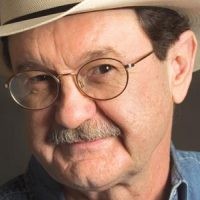Our nation’s true political spectrum is not right to left, but top to bottom, and Populism is about reducing the distance between the two.
My father, W.F. “High” Hightower, was a populist. Only, he didn’t know it — didn’t know the word, much less the history or anything about populism’s rich democratic ethos.
But he knew about bankers who regularly squeezed small-business families like ours with usurious interest rates. He knew how rough it was for a local business to fight off deep-pocketed chain stores that use predatory pricing and sledgehammer advertising budgets to seize local markets. And he saw with his very own eyes that the governor and legislature in faraway Austin operated as subsidiaries of Big Oil, the utility monopolies, and the other giants that were allowed to profit by picking the pockets of the general public.
He and my mother, Lillie, knew one other thing, too: There was once a Democratic Party that stood up for regular folks and actively promoted the ethic of the common good. Having been raised on hard-scrabble Texas farms and come of age in the Depression, they didn’t see the New Deal through ideological glasses, but simply as the help they and the rest of America needed — a path out of both depression and the Depression.
That path eventually allowed my parents to scramble into America’s lower middle class. Moreover, the New Deal’s outreach gave my father, who was not at all philosophical, a phrase that he used occasionally to express the gist of his political beliefs: “Everybody does better when everybody does better.”
That is Populism. Neither right nor left, Republican or Democrat — it is not based on ideology, but on two gut-level fundamentals: our people’s historic aspiration for a society and nation of fairness, justice and equal opportunity for all; and the actual life experience of people who see those values routinely trampled by domineering elites.
Populism is not an empty word for lazy reporters to attach to any angry spasm of popular discontent. But Populism has been the chief political impulse in America’s body politick — determinedly democratic, vigilantly resistant to the oppressive power of corporations and Wall Street, committed to grassroots percolate-up economics and firmly rooted in my old Daddy’s concept of “Everybodyness,” recognizing that we’re all in this together.
Although it was organized into a formal movement for only about 25 years, Populism has had an outsized, long-term and ongoing impact on our culture, public policies, economic structure, and governing systems. Even though its name is often misused and its history largely hidden, and even though neither major party will embrace it (much less become it), there are many more people today whose inherent political instincts are Populist, rather than conservative or liberal.
Yet the pundits and politicos frame our choices entirely in terms of that narrow con-lib ideological spectrum, ignoring the very large fact that most of us are neither, or a bit of both. Our nation’s true political spectrum is not right to left, but top to bottom. People can locate themselves along this vertical rich-to-poor spread, for this is not a theoretical positioning: It’s based on our real-world experience with money and power. This is America’s real politics. Forget the ideological screeds and partisan posturing that pass for “political debate” these days. “Left wing, chicken wing,” Woody Guthrie said dismissively of such rhetorical squabbles.
Our system of representative government has, in a word, collapsed. Most in Congress are not even trying anymore — not listening to the people, not talking their language, not even knowing any regular folks and obviously not representing their interests. But what we also have is a ripening political opportunity for a revitalized, 21st century Populist movement.
Mass movements don’t just magically appear out of the fog, fully grown, structured and mobilized. They emerge in fits and starts over many years, just as the American Revolution did, and as did the Populists’ original idea of a “cooperative commonwealth.” A successful people’s movement has to take the long view, to learn about itself as it builds, nurture the culture of its people, take chances, create fun for all involved, adapt to failures and successes, stay steadfast to its big principles, have a stoic tenacity — and organize, organize, organize. A little serendipity helps, too, so grab it when you can.
- When Greedy Corporations Want a Stupid Law, They Come to Texas - April 1, 2025
- Trump, Musk and ‘Little Buddy’ v. The People - March 25, 2025
- Hey, Democrats: To Defeat Trump Autocracy – Get Out of Washington - March 14, 2025


